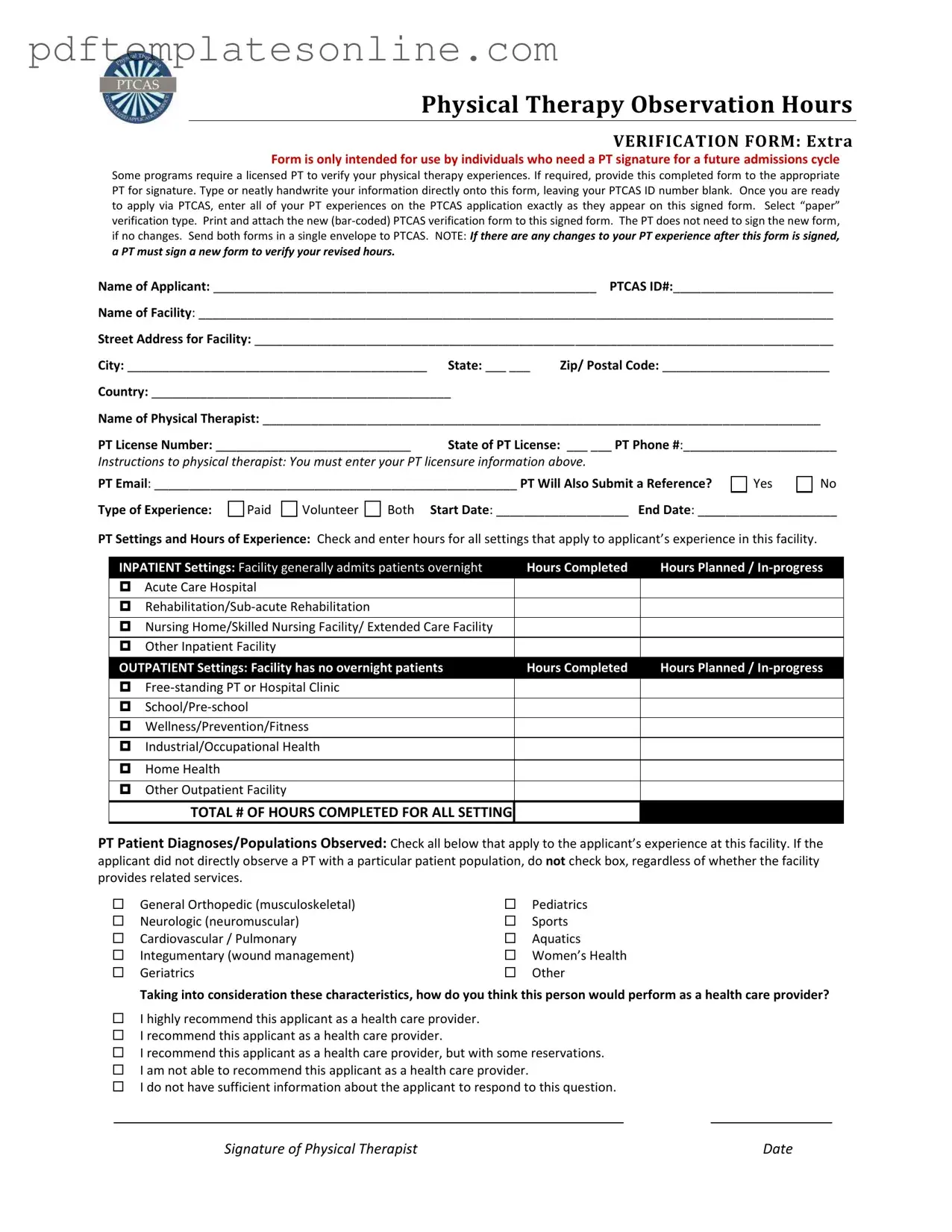Filling out the PTCAS form can be a straightforward process, but many applicants make critical mistakes that can hinder their application. One common error is failing to provide accurate information about their physical therapy experiences. It is essential to ensure that all details, such as the name of the facility and the physical therapist, are correct. Inaccuracies can lead to complications during the verification process.
Another mistake involves neglecting to leave the PTCAS ID number blank on the verification form. This step is crucial because it allows for proper tracking and association of the verification form with the application. Applicants should remember that this number is to be filled in later on the main application, not on the verification form.
Many individuals also overlook the requirement for a physical therapist's signature. If a program mandates this verification, it is imperative to have the PT sign the form before submission. Without this signature, the verification will be considered incomplete, potentially jeopardizing the application.
Additionally, applicants sometimes fail to enter their hours accurately. Each setting—whether inpatient or outpatient—requires specific hours to be documented. It is important to check and enter hours for all applicable settings. Omitting hours can misrepresent experience and may lead to an unfavorable evaluation.
Another frequent oversight is not indicating the type of experience correctly. Applicants must specify whether their experience was paid, volunteer, or both. This distinction is important for the admissions committee to assess the applicant's background appropriately.
Some applicants also neglect to update their forms if there are changes to their physical therapy experience after the initial signature. If any modifications occur, a new verification form must be signed by the PT to ensure that all information is current and accurate.
Moreover, failing to check the appropriate patient diagnoses or populations observed can be detrimental. Applicants should only check boxes for those populations they have directly observed. Misrepresenting this experience can lead to serious implications for the application.
Lastly, many applicants do not provide sufficient information regarding the physical therapist’s licensure. This includes ensuring that the PT’s license number and state are accurately recorded. Incomplete or incorrect licensure information can delay the verification process and may lead to rejection of the application.
